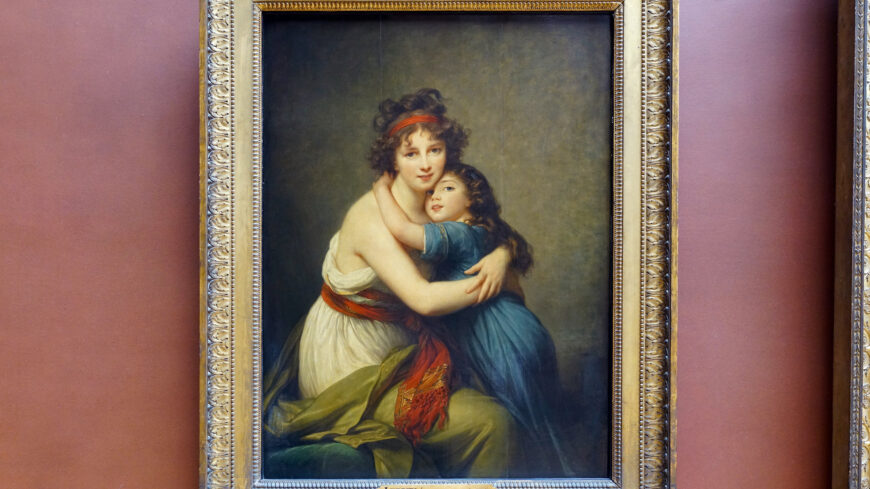Morality and the Art of the Classical Era
I picked Morality and the Art of the Classical Era as that era is my favorite so far. I am not fond of art depicting violence or nudity which the earlier eras seemed to have an abundance of. I chose three portraits where the subjects are modestly dressed, and the subject matter is either more wholesome or was void of any portrayal of violence.
Élisabeth Louise Vigée Le Brun, Self-Portrait with her Daughter, Julie, 1789, oil on canvas, 130 x 94 cm (Musée du Louvre). Speakers: Dr. Beth Harris and Dr. Steven Zucker. Le Brun was forced to flee France with her daughter to Italy because of her association with the Queen. My guess is that she painted this portrait while either in France or Italy.
For my first portrait I
chose Elisabeth Louise Vigée Le Brun’s self-portrait with her daughter Julie,
1789. The painting is an oil on canvas,130x94 cm, and is on display at Musée du
Louvre, in Paris.
What is appealing for me
about this painting is that it exhibits a strong bond between a mother and child
evidenced by the way they are fully embracing each other. Being a mother and
grandmother myself, the obvious affection they have for one another that shows through
the look on their faces speaks volumes. Their pose is relaxed, with Julie nestling
her head beneath her mother’s jawline. I like the soft, subtle tone of the light
to their side and the curves forming the soft folds of their dresses. Their soft
smiles showing an unconditional love for each other. This painting exudes an innocence
and is a welcome change from the earlier styles of art- which could feature a
large amount of nudity and/or violence.
I like this painting
with Cornelia showing her surprised visitor that her most valuable treasures
are her children. The setting for the portrait is that of a large home with a
window in the background showing the sky and a mountainous landscape in the distance.
Her children dressed in beautifully draped garments worn in the ancient Roman toga
style. Cornelia is wearing a white dress trimmed with gold fabric at the top
and a gold belt at the waist. While holding the jewels, the visitor looks a
little perplexed that Cornelia thought of her children first when she inquired
about her treasures, while the expression on Cornelia’s face seems to be almost
one of pity that the woman did not seem to understand how Cornelia could value
her children more than fine jewelry.
The painting of Isabella
or the Pot of Basil is based on a tragic love story written by John Keats, an
English poet (10/31/1795 – 2/23/1821). According to the story, her lover is murdered
by her brothers. After learning the whereabouts of his body from his ghost, she
digs it up, cuts off his head and buries it in a pot of basil. The painting
shows her grief while she caresses the pot of basil sitting on top of an altar.
Her nightgown is sheer, and she has a blanket wrapped around her waist. Her long
ebony hair is draped over the pot of basil which contains her lover’s head. Her
facial expression is one of shock, grief, and resignation that he is truly
gone.
As one who has experienced grief and loss on several occasions, I know the look on her face all too well. The artist did an excellent job capturing the emotionless face with the blank stare that happens when you are still in shock and that is all you can do. The rest of the room tends to fade away as it is not of any importance to her now



.jpg)
I dislike the violent and nudity paintings as well, I keep scrolling past those paintings. During the time when only men were permitted to art, Elisabeth had to work harder since women weren't allowed to drawing classes. I like the painting you chose as well because it depicts the love they have for each other!
ReplyDelete